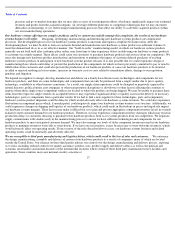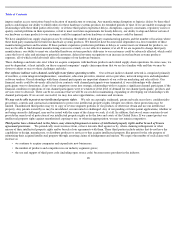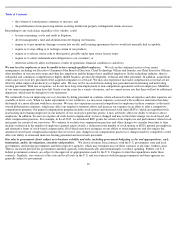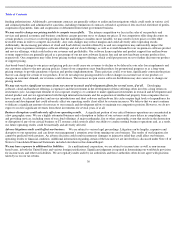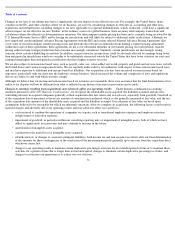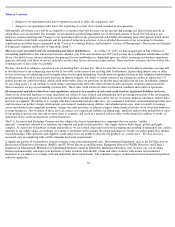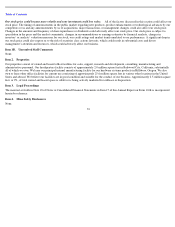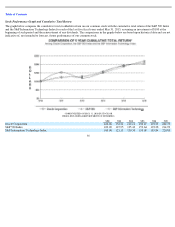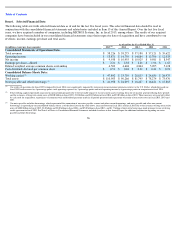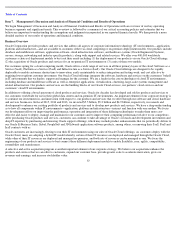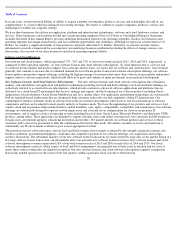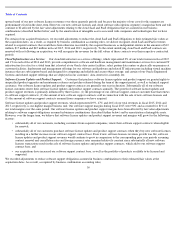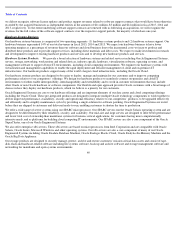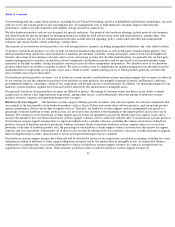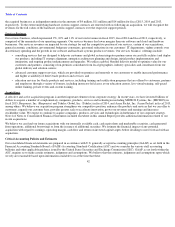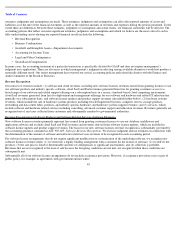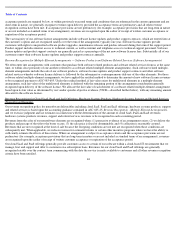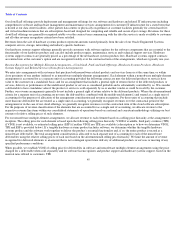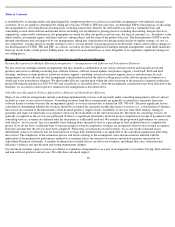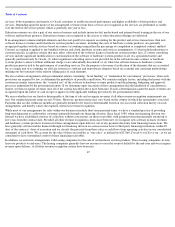Oracle 2014 Annual Report Download - page 41
Download and view the complete annual report
Please find page 41 of the 2014 Oracle annual report below. You can navigate through the pages in the report by either clicking on the pages listed below, or by using the keyword search tool below to find specific information within the annual report.
Table of Contents
Item 7. Management’s Discussion and Analysis of Financial Condition and Results of Operations
We begin Management’s Discussion and Analysis of Financial Condition and Results of Operations with an overview of our key operating
business segments and significant trends. This overview is followed by a summary of our critical accounting policies and estimates that we
believe are important to understanding the assumptions and judgments incorporated in our reported financial results. We then provide a more
detailed analysis of our results of operations and financial condition.
Business Overview
Oracle Corporation provides products and services that address all aspects of corporate information technology (IT) environments—application,
platform and infrastructure—and are available to customers either via cloud computing or on-
premises deployment models. Our products include
database and middleware software, application software, cloud infrastructure software, and hardware systems (Oracle Engineered Systems,
servers, storage, networking and industry specific products), along with support and related services. We offer over 400,000 worldwide
customers a choice of deployment models to best suit their needs including (1) the deployment of our products via our Oracle Cloud offerings,
(2) the acquisition of Oracle products and services for an on-premises IT environment or (3) a mix of these two models.
For customers opting for a cloud computing model, Oracle offers a wide range of services in all three primary layers of the cloud: Software as a
Service (SaaS), Platform as a Service (PaaS) and Infrastructure as a Service (IaaS). Our Oracle Cloud offerings are designed to be: rapidly
deployable to enable customers shorter time to innovation; easily maintainable to reduce integration and testing work; and cost effective by
requiring lower upfront customer investment. Our Oracle Cloud offerings integrate the software, hardware and services on the customers’ behalf
in IT environments that we deploy, support and manage for the customer. We are a leader in the core technologies of cloud IT environments,
including database and middleware software as well as enterprise applications, virtualization, clustering, large-scale systems management and
related infrastructure. Our products and services are the building blocks of our Oracle Cloud services, our partners’ cloud services and our
customers’ cloud IT environments.
In addition to offering a broad spectrum of cloud products and services, Oracle for decades has developed and sold its products and services to
our customers worldwide for use in their global data centers and on-
premises IT environments. An important element of our corporate strategy is
to continue our investments in, and innovation with respect to, our products and services that we offer through our software and cloud, hardware
and services businesses. In fiscal 2015, 2014 and 2013, we invested $5.5 billion, $5.2 billion and $4.9 billion, respectively, in research and
development to enhance our existing portfolio of products and services and to develop new products and services. We have a deep understanding
as to how all components within IT environments—application, platform and infrastructure—interact and function with one another. We focus
our development efforts on improving the performance, operation and integration of these differing technologies to make them more cost-
effective and easier to deploy, manage and maintain for our customers and to improve their computing performance relative to our competitors.
After purchasing Oracle products and services, customers can continue to take advantage of Oracle’s research and development investments and
deep IT expertise by purchasing and renewing Oracle support offerings, which may include product enhancements that we periodically deliver to
our Oracle E-Business Suite, Siebel, PeopleSoft and JD Edwards application software products, among others, or renewing their SaaS, PaaS and
IaaS contracts with us.
Oracle customers are increasingly electing to run their IT environments using our suite of Oracle Cloud offerings. As customers deploy with the
Oracle Cloud, many are adopting a hybrid IT model whereby certain of their IT resources are deployed and managed through the Oracle Cloud,
while other of their IT resources are deployed and managed on-premises, and both sets of resources can be managed as one. We focus the
engineering of our products and services to best connect these different deployment models to enable flexibility, ease, agility, compatibility,
extensibility and seamlessness.
A selective and active acquisition program is another important element of our corporate strategy. We believe our acquisitions enhance the
products and services that we can offer to customers, expand our customer base, provide greater scale to accelerate innovation, grow our
revenues and earnings, and increase stockholder value.
37


